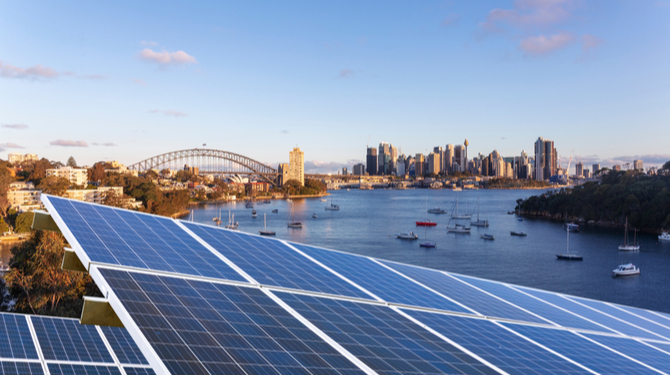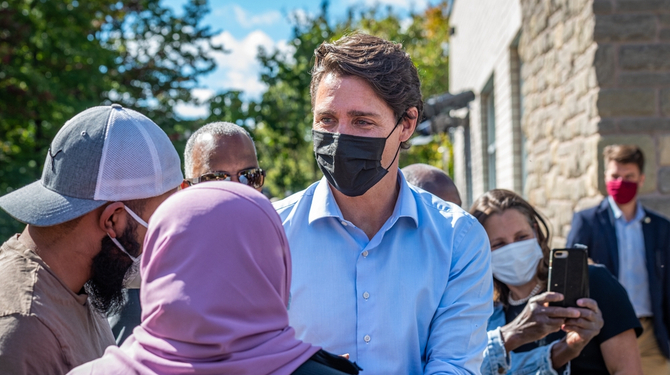Sign up for our free daily newsletter
YOUR PRIVACY - PLEASE READ CAREFULLY DATA PROTECTION STATEMENT
Below we explain how we will communicate with you. We set out how we use your data in our Privacy Policy.
Global City Media, and its associated brands will use the lawful basis of legitimate interests to use
the
contact details you have supplied to contact you regarding our publications, events, training,
reader
research, and other relevant information. We will always give you the option to opt out of our
marketing.
By clicking submit, you confirm that you understand and accept the Terms & Conditions and Privacy Policy
For many across the globe, summer 2021 played out like a disaster movie. Every few days there was fresh news of extreme weather events and altered climate patterns.
Floods in Germany and China, record wildfires across multiple continents, a string of hurricanes and storms in the United States, and alternating sub-arctic temperatures and heatwaves in North America all made it horribly apparent that the world we know is under siege.
The Intergovernmental Panel on Climate Change’s recently published Working Group 1 report, Climate Change 2021: the Physical Science Basis, sounded a code red for humanity, and this summer’s events have brought that warning vividly to life: we are pushing the global climate across dangerous red lines, and the complex system of life on earth that is a delicate interplay of elements, living organisms and climate is collapsing.
Paris Agreement
To have any chance of avoiding the worst effects of the climate crisis and dangerous climate tipping points, the 2015 Paris Agreement set a goal to limit the global temperature increase to 1.5 degrees Celsius above pre-industrial levels by 2050 at the very latest and then to become net carbon negative so that levels of greenhouse gas (GHG) emissions start falling. It is a Herculean challenge requiring a fundamental shift away from a fossil-fuel global economy to one that is cleaner, more regenerative and healthier.
We no longer have the luxury of time. We need to make immediate reductions to the 50 billion tons of carbon dioxide equivalent (CO2e) that are emitted every year.
------------
Read GLP's ESG and the law timeline
------
There are numerous challenges along the net-zero path, including addressing scope 3 emissions within net-zero targets, setting ambitious interim targets, moving from targets to action, deciding how to use carbon offsets and the quality of those offsets, putting in place robust governance policies, and minimizing residual emissions.
While looking at the measures organisations must scale in order to have a chance of meeting their net-zero target may seem daunting, there are some bright beacons of hope that indicate this change is achievable. The Chancery Lane Project (TCLP) is one of those beacons.
Legal profession's unique position
TCLP aims for a world where every contract and law enables solutions to climate change. The legal profession is in a unique position to help. Lawyers write contracts that influence nearly every major decision made by businesses, communities and other organizations. Currently, most legal agreements lock-in the existing high-carbon ways of doing business. If an agreement is silent on its climate impacts that means the parties will continue to operate using existing models that do not take account of climate change.
The project has over 1,100 active participants, across 200 organisations in 73 countries, including 50% of the global elite law firms
The good news is that those contracts also have the power to put the parties on a path to meet their net-zero targets. And those changes can be accomplished much quicker than the time it would take to introduce new laws to regulate those sectors. This accelerates the impact of that action, reducing emissions today and reducing emissions towards net zero earlier than might otherwise be the case.
TCLP was started by a group of lawyers who wanted to take action and use their commercial legal skills to tackle the climate crisis. The project has over 1,100 active participants, across 200 organisations in 73 countries, including 50% of the global elite law firms. So far, they have produced nearly 100 contract clauses to support businesses and communities in fighting the climate crisis and achieving their net-zero targets.
The model contract clauses have been peer reviewed by experts (including my colleagues at Practical Law) and are free for lawyers to include in their precedents and a variety of legal agreements, from supply chain agreements and finance contracts to facilities management contracts and leases.
Net-zero targets
The clauses oblige parties to set GHG targets, monitor and reduce their GHG emissions, undertake projects that use renewable power, avoid developments that will reduce the impact of natural carbon sinks and so on. Adding these clauses to agreements translates net-zero targets into clear instructions for how the business will operate, taking climate risks and impacts into account.
Lawyers who don’t recognise the importance of addressing climate impacts in their agreements are not just missing a business opportunity to win work, they are failing to adequately protect their clients from significant operational risks.
TCLP and its community of lawyers are here to help legal professionals as they navigate their and their clients’ net-zero journeys. TCLP resources help lawyers move their client from initial engagement with net-zero goals to large scale, transformative, real-world action. There are multiple case studies of lawyers who have used our clauses, and you can join our workshops to learn alongside peers how best to use the clauses and identify, and overcome, any challenges.
Every lawyer now has the opportunity to be a climate lawyer. TCLP provides lawyers with tools to help their clients worldwide reach their net-zero goals, and have a significant impact on climate change, one contract at a time.
For more information, visit www.chancerylaneproject.org
Becky Clissmann is a TCLP steering group member and senior editor in the Environment Team at Thomson Reuters Practical Law
Email your news and story ideas to: [email protected]










